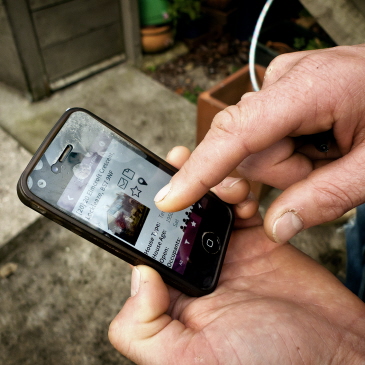A team of researchers led by Dr Chris Preist, Reader in Sustainability and Computer Systems from Bristol University’s Bristol Interaction and Graphics (BIG) group, will present four papers at the international conference. The conference brings together researchers in the field of sustainability who will discuss the positive and negative impacts of technology and how information and communication technologies (ICT) could be used to make the world more sustainable.
Chris Weeks’ paper, which has received a best paper nomination, proposes a behaviour model called the Power law of engagement model for energy saving. The model aims to provide a framework for taking disengaged householders and converting them into motivated retrofitting energy savers. The research also explores the vital role digital technologies can play in encouraging householders to retrofit their property.
As more activities are taking place online and more data is exchanged over the internet, it is becoming increasingly important to assess the energy consumed by the network that is connecting user devices in the home, such as laptops or smartphones, with the servers in data centres. Daniel Schien’s paper, entitled A review of top-down models of internet network energy intensity, reviews several past studies that have provided an assessment of network energy consumption giving very different results. The analysis identifies the reasons for the differences and shows that energy use by the network to deliver a digital service is significant but lower than some previous studies have suggested.
The predicted impacts of global climate change are diverse and extensive. ICTs offer great potential to enable and enhance climate change adaptation projects, programmes and activities. In ICT 4 climate change adaptation: systemic and generative perspectives and tools, Paul Shabajee presents a set of prototype tools that aims to enable the identification of opportunities for ICTs to play positive roles across the full spectrum of climate change adaptation contexts. The paper also highlights the importance of considering the unintended consequences of technologies.
The final Bristol paper to be presented at the conference, Beyond behaviour change: household retrofitting and ICT by Dr Elaine Massung, is about the work of the Digital Green Doors project and its deployment of a smartphone app at the Bristol Green Doors eco open home event. The research discusses how technology can help make retrofitting visible and improve learning within a community, while also encouraging householders to install energy efficiency measures at their own homes.
“The body of research we are presenting shows that ICT has an important role to play in supporting humanity in reducing our environmental impact, and also in adapting to the impacts that climate change is increasingly having,” said Dr Chris Preist. “However, it is also essential that we understand and reduce the direct environmental impacts resulting from our use of ICT.”
The 2nd annual ICT4S (ICT for Sustainability) conference in Stockholm, Sweden, will take place from Sunday 24 to Wednesday 27 August 2014.

